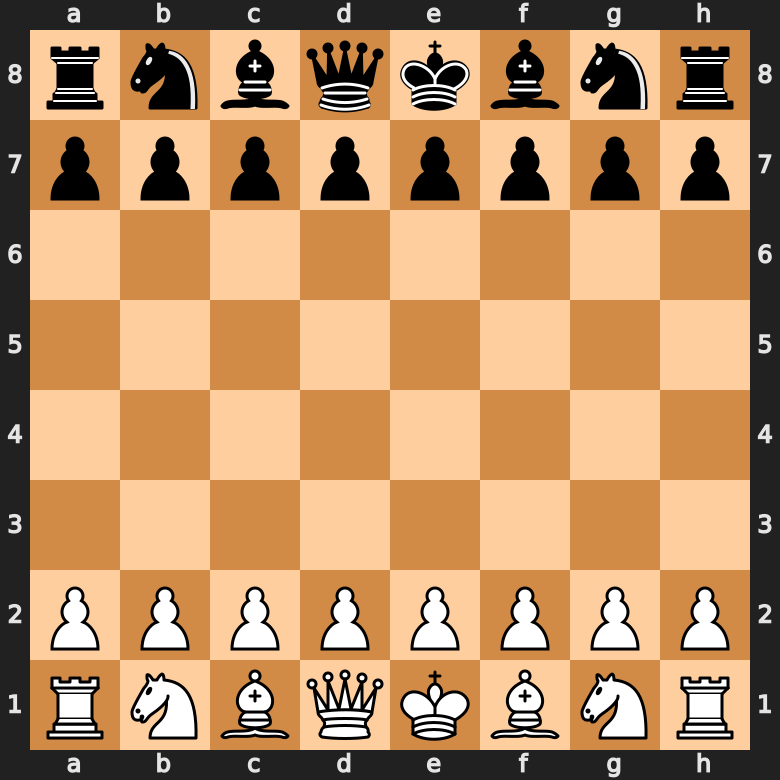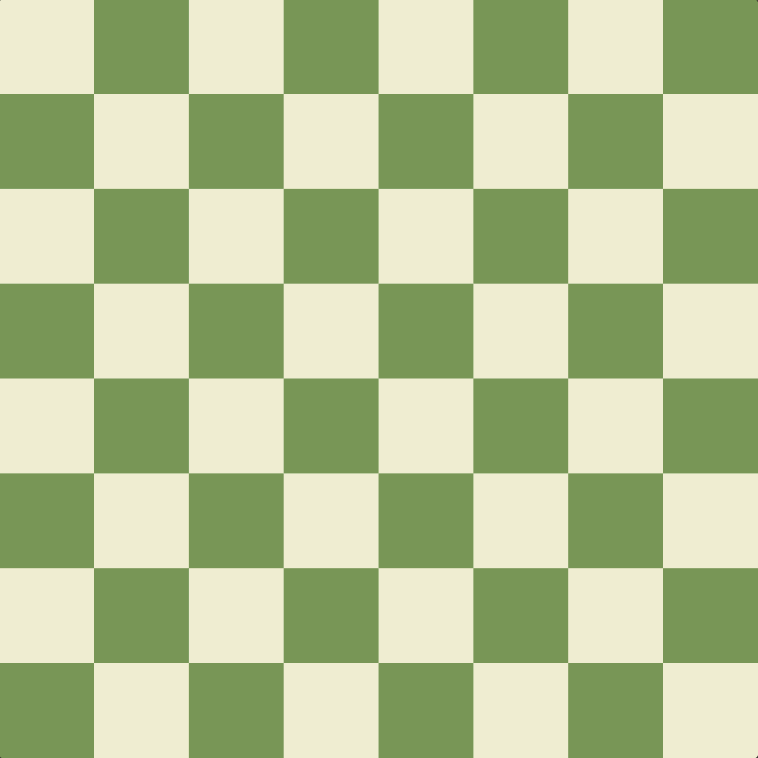Learn Chess Visually
A beautiful, screenshot-friendly guide to the basics.
1. The Battlefield: Files & Ranks
Ranks are the horizontal rows, numbered 1 to 8. White starts on ranks 1 and 2.
Files are the vertical columns, labeled with letters a to h.
The bottom-left square, a1, is always a dark square. Each square has a unique coordinate name.
2. The Army: Pieces & Their Moves
3. The Opening: The London System
A solid and easy-to-learn opening for White. The goal is to create a strong pawn structure and develop pieces to safe, effective squares.
4. The Endgame: King & Pawn vs. King
One of the most common endgames. The goal is to promote the pawn to a Queen. Success depends on controlling "key squares".
Winning Position: King on a Key Square
If White's King can reach one of the green key squares in front of its pawn, it can force the pawn to promote.
Drawing Position: The Opposition
If the defending King can get directly in front of the attacking King (called "opposition"), it can block the pawn and force a draw.
♟️ Chess Quick Reference
Initial Board Setup
Remember the setup:
- Pawns on the 2nd and 7th ranks.
- Rooks in the corners.
- Knights next to Rooks.
- Bishops next to Knights.
- Queen on her own color (White Queen on a light square, Black Queen on a dark square).
- King fills the last spot.
1. Legal Moves, Rules & Piece Value
- Pawn (1 point): Moves 1 step forward (2 on first move); captures diagonally.
- Knight (3 points): L-shaped (2 + 1); jumps over pieces.
- Bishop (3 points): Moves diagonally.
- Rook (5 points): Moves horizontally or vertically.
- Queen (9 points): Combines Rook + Bishop moves.
- King (∞ — invaluable): Moves 1 square in any direction.
Special Rules: Castling, En Passant, Promotion, Check, Checkmate, Stalemate
Learn More: Video Guide to Rules & Pieces →2. Openings & Defenses
White Starts: 1.e4 – Open, tactical | 1.d4 – Strategic
Black Defenses: Vs e4: e5, c5 (Sicilian), e6 (French) | Vs d4: d5, Nf6 (Indian)
Examples: Italian Game: 1.e4 e5 2.Nf3 Nc6 3.Bc4 | London System: 1.d4 d5 2.Nf3 Nf6 3.Bf4
Learn More: Top 5 Openings for Beginners →3. Essential Endgames
- King + Pawn vs King → Learn how to queen
- King + Rook vs King → Lucena & Philidor
- King Opposition → Crucial for pawn endgames
- Queen vs King or Pawn → Avoid stalemates
4. Daily Drills & Apps
- Tactics Daily: Pins, forks, skewers
- Play one 15+10 game daily
- Review your own losses
Apps & Sites: Chess.com, Lichess.org
YouTube Educators: GothamChess, Chessbrah, Daniel Naroditsky
🧠 Visualization Practice
Chess visualization means playing out moves in your head. It builds calculation skills and improves focus.
- Imagine the board empty: Place a knight on d4—where can it go?
- Close your eyes: Replay a simple game (like 1.e4 e5 2.Nf3 Nc6).
- Play “blindfold” mode: On Lichess.org, activate blindfold pieces in your profile settings for practice.
Tip: Start with 2-3 moves deep. This skill makes your brain faster at calculating variations.
Learn More: How to Train Visualization →📅 30-Minute Daily Study Plan
| Time | Task |
|---|---|
| 5 min | Visualization Practice (mentally move pieces) |
| 10 min | Tactics Puzzles (forks, pins, skewers) |
| 5 min | Endgame Drills (e.g. King + Pawn) |
| 10 min | Play a rapid game (10+ min) and analyze it after. |
EndGames
Tutorials
Summary Note
How to proceed

